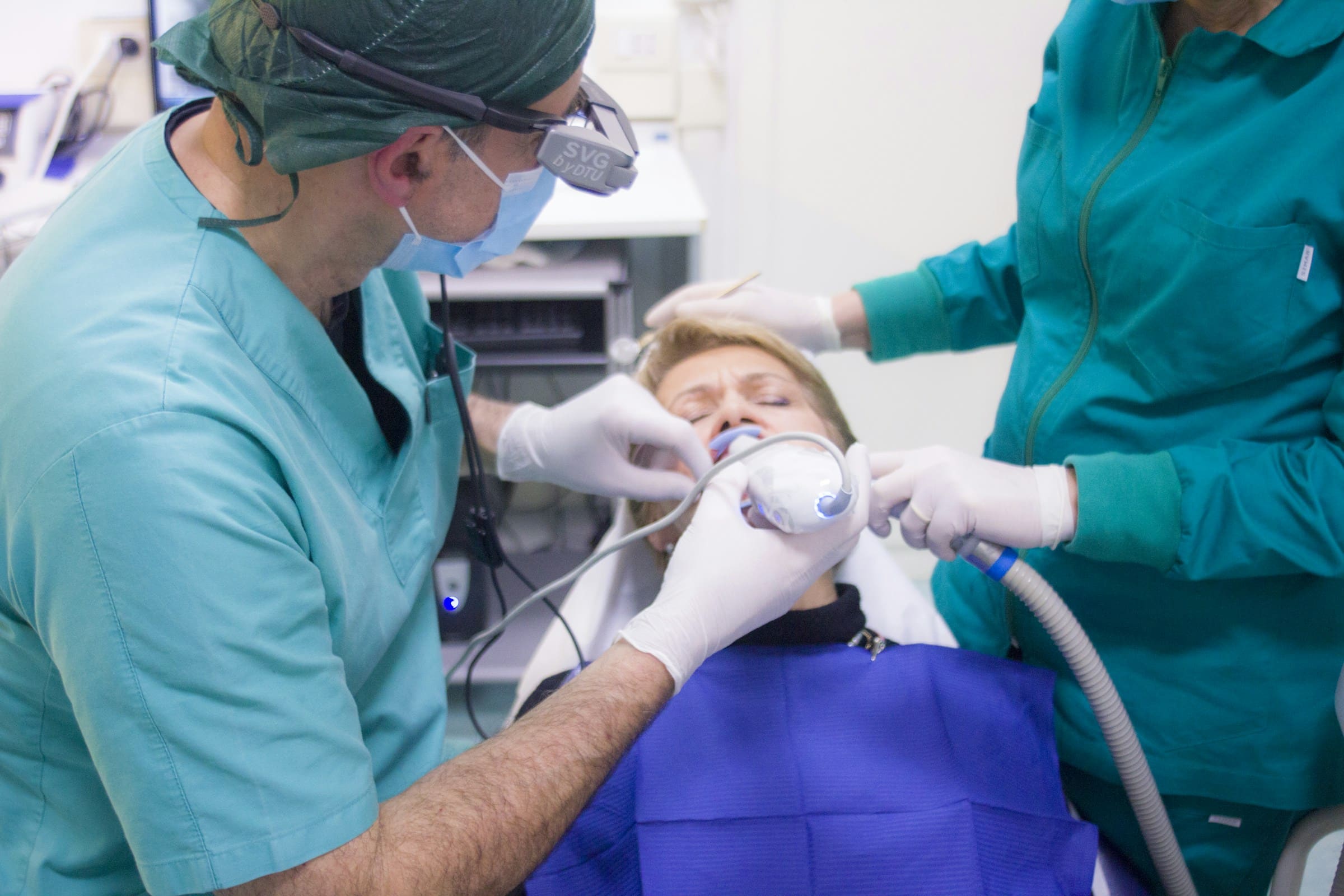In the world of dentistry, musculoskeletal disorders (MSDs) constitute a pressing issue. Dentists often find themselves working in awkward postures for extended periods, which can put considerable strain on their physical health. As such, understanding how to manage and prevent these disorders is crucial. Work-related musculoskeletal disorders (WMSDs) are prevalent in the dental profession, with numerous studies highlighting this concern. Many dental professionals experience pain, discomfort, and a reduced ability to work effectively. In tackling this issue, let’s explore the most effective strategies for managing work-related musculoskeletal disorders among dentists.
Identifying and Understanding Musculoskeletal Disorders in Dentistry
Before we delve into strategies for managing WMSDs, it’s essential to understand the nature of these disorders. MSDs represent a group of painful conditions that affect the muscles, bones, tendons, and other components of the musculoskeletal system. They are often induced by prolonged, awkward postures, repetitive movements, and frequent forceful exertions.
A voir aussi : How Does the Use of Augmented Reality in Fitness Apps Influence Motivation and Exercise Consistency?
For dental professionals, the risk of developing these disorders is high due to the nature of their work. Dentists frequently lean over patients, hold heavy instruments, and perform repetitive movements. Over time, these factors can lead to symptoms such as back pain, neck discomfort, and carpal tunnel syndrome.
Various studies have documented the pervasiveness of WMSDs in dentistry. A Google Scholar search for “musculoskeletal disorders in dentistry” yields thousands of results. These studies provide essential insights into the problem, serving as a foundation for preventative strategies and interventions.
Dans le meme genre : What Is the Impact of Culturally-tailored Health Education on Diabetes Management in Minority Groups?
Recognizing the Ergonomic Risks in Dentistry
Understanding the ergonomic risks associated with dentistry is a key step towards managing WMSDs. Ergonomics involves designing and arranging workspaces so that they fit the people who use them. In a dental setting, poor ergonomics can contribute significantly to the development of MSDs.
Working in awkward postures is a common ergonomic risk among dental professionals. Continuous bending and twisting of the neck, prolonged static postures, and repetitive hand movements can strain the musculoskeletal system and lead to WMSDs. Dentists should be cognizant of these risks and seek to mitigate them through modifications in their working environment and practices.
Implementing Ergonomic Interventions
Once the ergonomic risks are identified, implementing appropriate interventions can help manage WMSDs. These can be simple changes, such as adjusting the dental chair’s height for better posture or using ergonomically designed tools that reduce the strain on the hands and wrists.
Several studies have highlighted the effectiveness of ergonomic interventions in managing MSDs. For instance, a 2019 study published in the Journal of Dental Research found that ergonomic training and interventions significantly reduced the incidence and severity of WMSDs among a group of dentists.
Implementing ergonomic interventions is not a one-size-fits-all approach. Each dentist may require a unique set of interventions tailored to their specific challenges and working conditions. It’s essential to consult with an ergonomics expert to develop an effective plan.
Promoting Regular Breaks and Physical Exercise
Taking regular breaks and engaging in physical exercise is an often overlooked but vital strategy for managing WMSDs in dentistry. Continuous work without rest can exacerbate the physical strain, increasing the risk of developing MSDs.
Short breaks allow the muscles to relax and recover, reducing the risk of strain and injury. Physical exercise, on the other hand, can enhance muscle strength and flexibility, improving the body’s resilience against physical strain.
Studies have shown that regular breaks and physical exercise can significantly reduce the risk and severity of WMSDs among dental professionals. A study published in the Journal of Occupational Rehabilitation found that dentists who took regular breaks and engaged in regular exercise were less likely to report MSD symptoms compared to those who didn’t.
Adopting a Comprehensive Approach to MSD Management
Ultimately, managing WMSDs in dentistry requires a comprehensive approach that combines understanding of the disorders, identifying ergonomic risks, implementing interventions, and promoting healthy work habits. Dentists should stay informed about the latest research and strategies for managing WMSDs and seek professional advice where necessary.
This comprehensive approach not only helps manage existing disorders but also reduces the risk of developing new ones. It contributes to a healthier, more comfortable working environment, enhancing productivity and job satisfaction among dental professionals.
Utilizing Assistive Technology in Dentistry
Assistive technology has gained significant traction in various fields, and dentistry is no exception. The incorporation of assistive technology in dental practice can play a pivotal role in managing musculoskeletal disorders. This technology can facilitate better working postures, reduce the need for repetitive movements, and mitigate forceful exertions, all of which are significant risk factors for MSDs among dentists.
Dentists often grapple with maintaining a proper working posture due to the need to lean over patients or hold heavy tools. Assistive technology, such as adjustable dental chairs and mechanically aided instruments, can help address these challenges. For instance, a dental chair that can be adjusted to various heights and angles can allow a dentist to work comfortably without straining their back or neck. Similarly, mechanically aided instruments can reduce the need for forceful exertions and repetitive movements, mitigating the risk of developing MSDs such as carpal tunnel syndrome.
Furthermore, many studies included in a Google Scholar search highlight the role of assistive technology in managing WMSDs among dental professionals. For instance, a control group and intervention group study found that the use of assistive technology significantly improved the work ability of dental professionals dealing with WMSDs.
Despite the apparent benefits, the adoption of assistive technology requires a personalized approach. Each dentist may require different types of assistive technology, depending on their specific work conditions and challenges. As such, consultation with an expert in assistive technology can be beneficial in identifying the most suitable solutions.
Fostering a Culture of Prevention and Awareness
In addition to managing existing musculoskeletal disorders, preventing new ones is equally crucial. This necessitates fostering a culture of prevention and awareness within the dental profession. Dental hygienists, dental students, and practicing dentists should be equipped with the knowledge and skills to recognize and mitigate the risk of developing MSDs.
Tools such as workshops, seminars, and continuous professional development courses can be effective in raising awareness about MSDs’ risk factors and the importance of ergonomic practices. Moreover, dental institutions should prioritize ergonomics and MSD prevention in their curricula to prepare future dental professionals adequately.
Creating a culture of prevention also involves keeping abreast with emerging research and advances in ergonomic interventions. Professionals should learn from the experiences and practices of their peers, contribute to scholarly discourse, and explore opportunities for collaboration. Google Scholar and other databases are invaluable resources for staying informed and up-to-date.
Conclusion
Work-related musculoskeletal disorders pose a significant challenge for dental professionals. However, a comprehensive and multi-faceted approach can effectively manage and prevent these disorders. This strategy includes understanding the nature of MSDs, recognizing and mitigating ergonomic risks, implementing ergonomic interventions, utilizing assistive technology, promoting regular breaks and physical exercises, and fostering a culture of prevention and awareness.
The strategies discussed in this article are not exhaustive; they represent the foundational steps that each dental professional can take to safeguard their physical health. As the field of dentistry continues to evolve, so should our understanding and management of WMSDs. Dental professionals should stay informed about the latest research and strategies for managing WMSDs, continuously adjust their practices based on new insights, and promote a culture that values ergonomics. We owe it to ourselves, our peers, and our patients to prioritize our health and well-being in our quest for delivering exceptional dental care.






